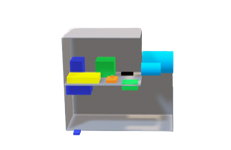Business
Roll-to-Roll
Energy facilitiest business department
An increasing interest continues to be paid to energy-efficient lithium-ion secondary batteries to overcome the exhaustion caused by the excessive use of fossil fuels. In a lithium-ion secondary battery, when discharging, a lithium ion moves from an anode to a cathode, and when charging, a lithium ion moves back from the cathode to the anode to find a place.
Such a lithium ion battery consists of a cathode, an anode, a separator, and an electrolyte, and various materials and combinations are being developed. The manufacturing process of lithium-ion batteries is largely divided into the following three processes.
01.
Electrode manufacturing process
Mixing, Coating, Roll Press, Slitting
01

Mixing
02

Coating
03

Calendaring
04

Slitting

02.
Battery assembly process
Winding, jelly roll insertion and electrolyte injection and sealing process
01

Vaccum Drying Chamber
02

Electrode Punching
03

Z-Stacking
04

Tab Welding
05

Pouch Forming
06

2-side Sealing
07

Electrolyte Injection
08

Degassing
09

Hot Pressing
10

Inspecting
페이지 위로

